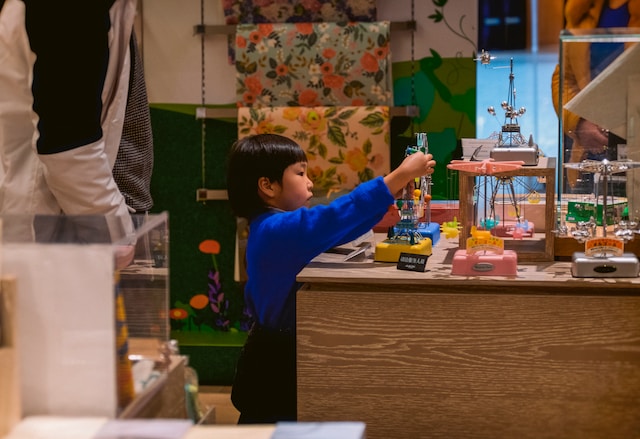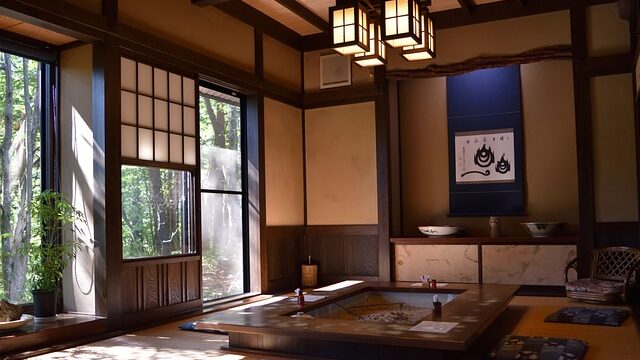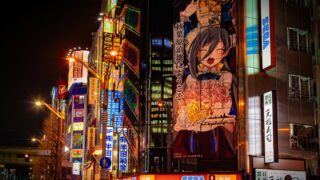Japan, a land of tradition, culture, and technology, offers a unique blend of the old and new. For hobbyists and collectors, Japan presents a treasure trove of opportunities. From manga and anime figures to traditional arts and crafts, the country’s hobby shops are truly a paradise. If you’re planning a trip to Japan, dive into these must-visit hobby destinations and discover a world of passion and creativity.
Akihabara: Tokyo’s Otaku Paradise
Nestled in the heart of Tokyo, Akihabara stands as an electrifying testament to Japan’s undying love for pop culture, earning it the moniker “Otaku Paradise”. Otaku, typically referring to someone deeply immersed in anime, manga, and video games, would find Akihabara to be nothing short of a dreamland.
Begin your journey with Mandarake, a mega-store spread across multiple floors, each dedicated to a unique genre. From vintage manga collections that harken back to post-war Japan to limited edition figurines that only grace the shelves for a fleeting moment, Mandarake offers a deep dive into otaku culture. For those seeking rare collectibles, navigating the store’s labyrinthine aisles might just yield that elusive item you’ve been hunting for.
Step out onto the bustling streets and you’re immediately greeted by the dazzling displays of electronic shops. Whether you’re a casual tech user or a hardcore enthusiast, stores like Yodobashi Camera and Sofmap provide a comprehensive array of the latest gadgets, parts, and software. From high-end gaming PCs to vintage game consoles, the array is nothing short of overwhelming.
But Akihabara is not just about shopping. Dive deeper into the district and you’ll discover a world where fiction seamlessly blends with reality. Themed cafes, like the renowned Maid Cafes, offer a unique dining experience where staff, dressed as maids or other anime characters, serve with a side of theatrics. Engage in conversations, play themed games, and even enjoy live performances, all while sipping on a cup of coffee.
For music lovers, Akihabara’s numerous stores offer soundtracks, theme songs, and vocaloid albums. And if you’re keen on picking up a musical instrument, stores dedicated to electronic instruments and synthesizers await.
As evening descends, Akihabara transforms into a neon-lit spectacle. Arcades, locally known as Game Centers, beckon with the enticing glow of screens and the cacophony of sound effects. Whether you want to relive the golden days of retro gaming or challenge yourself with the latest arcade hits, places like Club Sega and Taito Game Station promise hours of entertainment.
In essence, Akihabara is not just a district; it’s an experience, a celebration of Japan’s vibrant pop culture. Every corner, every store, every cafe resonates with the heartbeat of a culture that has captured the imagination of people worldwide.
Kyoto: The Heartbeat of Tradition
Kyoto, the ancient capital of Japan, stands as a serene and poignant contrast to the bustling modernity of cities like Tokyo. With its cobblestone streets, centuries-old temples, and an air infused with history, Kyoto is a living museum, inviting visitors to step back in time and immerse themselves in Japan’s rich cultural tapestry.
Central to Kyoto’s allure is its unparalleled commitment to the arts and crafts that have defined Japanese culture for millennia. As you wander through Kyoto’s scenic neighborhoods, you’ll encounter the world of Kiyomizu-yaki pottery. With origins dating back to the 5th century, this pottery style is celebrated for its elegance and intricate designs. Workshops in the city offer hands-on experiences, allowing you to shape clay and witness it transform into beautiful ceramics under the skilled guidance of master craftsmen.
Beyond pottery, Kyoto is also a bastion of textile artistry, particularly with Kyo-Yuzen. This traditional dyeing technique, characterized by its vibrant colors and detailed patterns, is most prominently used in the creation of kimonos. Pay a visit to one of the many textile studios, and you might be fortunate enough to witness artisans meticulously hand-painting designs onto silk, a process that marries patience with passion.
No journey through Kyoto’s traditional arts would be complete without marveling at the art of Kyo-ningyo, or Kyoto dolls. These dolls, often dressed in intricate kimonos and bearing lifelike expressions, have been cherished for generations, both as artistic masterpieces and as cherished gifts. Specialty stores showcase a vast range of these dolls, from those that commemorate special occasions to ones that depict historical figures and theatrical characters.
Amidst the city’s historical backdrop, you’ll also find workshops dedicated to washi – traditional Japanese paper. Crafted from mulberry bark and known for its durability and texture, washi plays a crucial role in various Japanese arts, from calligraphy to origami. Engage in workshops that illuminate the delicate process of papermaking, where each sheet, with its unique texture and subtle imperfections, tells a story of its own.
While the arts and crafts beckon, it’s also worth noting that Kyoto is home to traditional tea houses, where the ritualistic preparation and consumption of matcha (green tea) offers a meditative experience. Sitting on tatami mats, savoring the rich taste of matcha, and soaking in the tranquility, you’ll truly understand why Kyoto is often referred to as the spiritual heart of Japan.
In conclusion, Kyoto is more than just a city; it’s a journey through Japan’s soul. Every craft, every art form, every tradition you encounter is a testament to the city’s dedication to preserving the essence of Japanese culture. It’s a place where the past and present coexist harmoniously, inviting travelers to experience and celebrate the timeless beauty of tradition.
Osaka’s Nipponbashi: More than a Rival
Osaka, renowned for its vibrant street life, tantalizing cuisine, and warm-hearted locals, has carved its unique niche in the realm of Japanese pop culture through Nipponbashi. While Akihabara in Tokyo often overshadows it in global discourse, any true hobby enthusiast would tell you that Nipponbashi, colloquially known as Denden Town, holds its own distinctive charm.
The streets of Nipponbashi are a tantalizing blend of the old and the new. Traditional merchant houses stand side-by-side with gleaming electronics stores, creating a seamless transition between historical legacy and modern innovation. As you meander through its bustling streets, the array of electronic goods, from the latest tech gadgets to retro electronics, at places like Joshin or Yamada Denki, is a testament to Osaka’s deep-rooted relationship with innovation.
However, Nipponbashi’s pulse truly lies in its pop culture offerings. Manga, anime, and gaming enthusiasts will find an Aladdin’s cave of treasures in its myriad shops. Stores like Super Potato beckon retro gaming enthusiasts with its vast collection of vintage games and consoles. Dive into its aisles and you’ll be transported back in time, with classics from the NES era to the PlayStation’s golden days.
Just as Akihabara boasts themed cafes, Nipponbashi offers its own unique twist. Maid Cafes are abundant here too, but with a Kansai flair, showcasing Osaka’s more laid-back and comedic take on pop culture. Moreover, local pop-up events often spotlight indie developers, artists, and creators, offering a platform for fresh talent and innovative ideas.
A key differentiator for Nipponbashi is its emphasis on regional collectibles. Unique to Osaka, these items often encompass local folklore, history, or simply the quirky humor the city is famous for. Dive into shops specializing in such collectibles, and you’ll discover stories and legacies distinct to this region.
Nipponbashi also thrives as a hub for cosplay. Streets come alive during festivals, with enthusiasts showcasing intricate costumes, embodying their favorite characters, and celebrating the art of transformation. Stores dedicated to cosplay gear cater to both novices and professionals, ensuring everyone can partake in this theatrical hobby.
In summation, Nipponbashi is not merely Akihabara’s counterpart or rival; it’s a universe in its own right. Imbued with Osaka’s indomitable spirit, humor, and warmth, it offers a different, equally enchanting perspective on Japan’s rich pop culture tapestry. Whether you’re a seasoned otaku or a curious traveler, Nipponbashi invites you to revel in its captivating blend of tradition and modernity.
Sapporo: Embracing the Cold
Sapporo, the largest city on Japan’s northernmost island of Hokkaido, wears its chilly climate with pride. Unlike other Japanese cities famed for their electronics, pop culture, or traditions, Sapporo offers a unique blend of nature-inspired hobbies and snow-infused festivities. With its picturesque landscapes and icy allure, Sapporo promises a wintery experience that is both enchanting and invigorating.
One cannot speak of Sapporo without mentioning its world-famous Sapporo Snow Festival. Held annually in February, this event transforms the city into a winter wonderland, showcasing colossal snow sculptures and intricate ice masterpieces. Crafted by both local artisans and international participants, these sculptures range from lifelike renditions of famous personalities to replicas of iconic landmarks. As you traverse the festival grounds, each artwork tells a story, reflecting the artist’s passion, imagination, and undying love for winter.
For the sports enthusiasts, Sapporo’s chilly climate presents a haven for winter activities. The nearby Mount Teine beckons skiers and snowboarders alike, boasting slopes that cater to both beginners and seasoned pros. Local shops, like Sapporo Factory’s outdoor stores, provide equipment and gear, ensuring that everyone is prepared to embrace the snowy slopes with gusto.
Beyond its snow sports, Sapporo offers unique crafts inspired by the indigenous Ainu culture. Visit the Ainu Museum and you’ll be introduced to a world of traditional crafts, from ornate wood carvings to intricate fabric patterns. These crafts not only showcase the skills of the Ainu people but also offer a deep dive into their history, beliefs, and harmonious relationship with nature.
A stroll through Sapporo’s streets during the winter months will likely lead you to local craftsmen showcasing the delicate art of ice sculpting. With chisels and chainsaws in hand, they transform blocks of ice into shimmering masterpieces, ranging from delicate fauna to grandiose abstract creations. For those inspired to try their hand at this icy craft, workshops provide a firsthand experience, guiding novices in crafting their own frosty creations.
Lastly, Sapporo’s culinary scene is a testament to the city’s adaptability to its cold environment. Warm up with a bowl of Sapporo ramen, characterized by its rich miso broth and hearty toppings. Pair it with a glass of Sapporo beer, a product of Japan’s oldest brewery, and you have a meal that embodies the city’s spirit: warm, inviting, and full of character.
In conclusion, Sapporo, with its snow-kissed landscapes and cold-embracing culture, offers a unique and heartwarming experience. It’s a city that celebrates its icy environment, turning what could be seen as a challenge into a canvas of creativity, adventure, and warmth. Whether you’re carving down a snow-covered slope, admiring a snow sculpture, or simply savoring the local flavors, Sapporo ensures your heart remains warm, no matter how cold the weather.
Yokohama: A Global Melting Pot
Lying just south of Tokyo, the port city of Yokohama tells a tale unlike any other in Japan. With its origins as one of the country’s first ports opened to foreign trade in the mid-19th century, Yokohama evolved into a dynamic fusion of Japanese traditions and global influences, becoming a true cosmopolitan epicenter.
A walk through the city’s Motomachi Shopping Street is like taking a voyage around the world. The avenue, once the residential area for foreigners, boasts an eclectic blend of boutiques and cafes, where Japanese craftsmanship meets global styles. From European-inspired bakeries serving fresh croissants to quaint shops offering trinkets from across the globe, Motomachi stands as a testament to Yokohama’s embrace of worldwide cultures.
Yokohama’s Chinatown, known as Chukagai, is the largest in Japan and is a sensory extravaganza. As you navigate its vibrant streets and alleyways, the aroma of authentic Chinese dishes fills the air, from dim sum to Peking duck. Intricately designed gates, traditional lanterns, and temples provide a backdrop, creating an atmosphere that is both foreign and familiar. Here, festivals celebrating Chinese traditions, like the Lunar New Year, are observed with gusto, blending seamlessly with Japanese festivities.
Yet, the city’s global embrace is not restricted to its streets. The Yokohama Red Brick Warehouse, once a customs inspection facility, has been transformed into a hub for art and culture. This iconic structure hosts exhibitions, concerts, and events showcasing talents from across the globe. The juxtaposition of the building’s historical architecture with contemporary art forms encapsulates Yokohama’s ethos of merging the old with the new.
For hobbyists with a penchant for maritime history, the Yokohama Port Museum and the sailing ship Nippon Maru await. Here, one can delve into the rich history of Yokohama’s port, understanding its pivotal role in Japan’s journey toward globalization. The Nippon Maru, with its towering masts and intricate rigging, offers a tangible glimpse into the bygone era of maritime exploration.
Food enthusiasts will find solace in Yokohama’s Ramen Museum. While ramen is quintessentially Japanese, this museum goes beyond showcasing local flavors. Representing various regional ramen from across Japan and its evolution influenced by international cuisines, it demonstrates how a simple noodle dish transformed, adapting and absorbing global tastes.
To sum up, Yokohama is more than just a city; it’s a tapestry woven with threads from all corners of the world. It reminds us that while cultures may originate from distinct places, when they converge, they create something truly extraordinary. In Yokohama, one doesn’t just witness Japanese culture; they experience a symphony of global harmonies playing in perfect unison.
The Digital Frontier: Online Hobby Shops
In today’s rapidly evolving digital era, the boundaries of traditional brick-and-mortar stores are expanding beyond physical spaces. Japan, known for its cutting-edge technology and innovation, is at the forefront of this online shopping revolution, especially in the realm of hobbies. Whether it’s anime, model kits, or traditional arts and crafts, the digital realm provides an expansive universe for enthusiasts globally.
AmiAmi is a name that resonates with many in the anime and manga community. As one of Japan’s leading online hobby shops, it offers an exhaustive collection of figurines, collectibles, and related merchandise. Their site, updated daily, often teases fans with exclusive releases and limited edition items. Detailed photographs, product descriptions, and user reviews ensure that enthusiasts can make informed decisions from the comfort of their homes.
For those with a passion for model building and Gundams, HobbyLink Japan stands out. With an inventory ranging from beginner kits to advanced models, the site caters to hobbyists of all skill levels. Detailed tutorials, product insights, and a community forum make the shopping experience interactive and educational, allowing modelers to connect and share their creations.
Traditional arts and crafts have also found a place in the online world. Websites like Japan Craft provide a digital gateway to age-old Japanese crafts, from origami papers to pottery tools. Their extensive how-to guides and video tutorials bring the intricate details of these crafts to life, allowing users to immerse themselves in the artistry without the need to travel.
Books, another beloved hobby for many, have found a sanctuary in platforms like CDJapan. Beyond just CDs, the portal offers a vast array of magazines, manga, and novels, many of which come with exclusive bonus items. The site’s easy-to-use interface, complete with English translations and genre categorizations, makes hunting for that elusive edition or latest release a breeze.
For hobbyists on the hunt for niche items or rare collectibles, online auction sites like Yahoo! Japan Auctions offer a treasure trove. From vintage video games to rare manga editions, the bidding platform provides a space for both buyers and sellers to engage in real-time auctions, adding an adrenaline rush to the shopping experience.
In conclusion, the digital frontier has revolutionized the world of hobbies. Japan’s online hobby shops break down geographical barriers, granting global enthusiasts unparalleled access to their passions. With detailed product insights, interactive platforms, and a sense of community, these online portals promise not just a transaction, but an enriching experience that bridges the gap between tradition and technology.





